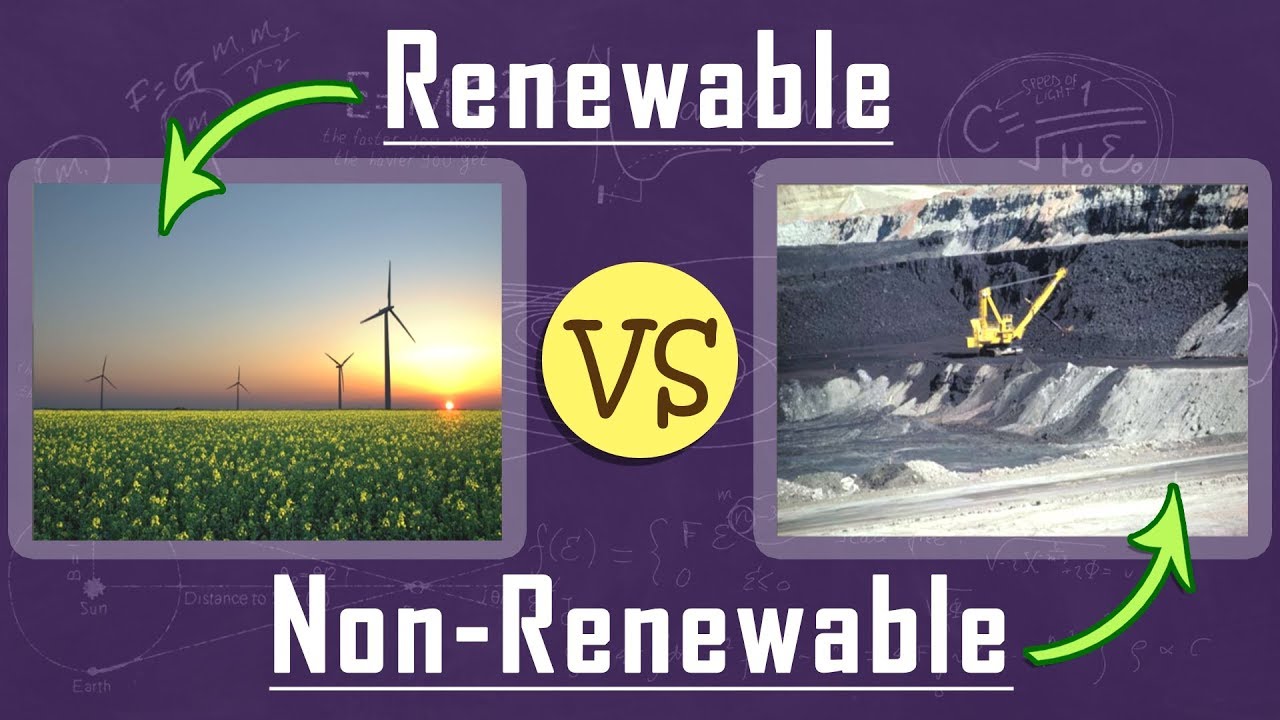What is the difference between renewable and non-renewable resources?
Natural resources can be classified as either renewable or non-renewable resources. These two terms are widely talked about when discussing the issues related to climate change.
The main difference between renewable and non-renewable resources is that the former can be renewed or regained once used whereas the latter is depleted immediately after use.
You May Also Enjoy: Difference Between Liquefied Petroleum Gas and Compressed Natural Gas

Comparison Table (Renewable vs Non-Renewable Resources)
| Basic Terms | Renewable Resources | Non-Renewable Resources |
| Description | These are natural resources that can be used numerous times and get replenish. | These are natural resources that can be used once and disappear forever. |
| Depletion | Cannot be depleted over time | Get depleted with time |
| Examples | Sunlight, water, wind, and also geothermal sources | Petrol, coal, nuclear energy, natural gas |
| Supply | Have unlimited supply | Have limited supply |
| Environmental Impact | Low carbon footprint and carbon dioxide emission | Have higher carbon footprint and carbon dioxide emission |
| Cost | The initial cost is relatively higher | The initial cost is comparatively lower |
| Infrastructure Requirement | Inaccessible and too expensive to acquire | Accessible and cost-effective |
| Area Requirement | Large land or offshore area | Lower area requirement |
What Are Renewable Resources?
Renewable resources are natural resources that cannot get depleted even after using continuously. These resources are readily available and replenish for use without facing any challenges.
Examples of renewable resources are the sun, wind, geothermal, water, tides, biomass, and ocean currents. These resources are also known as perpetual resources.
However, misuse of these resources has resulted in impurities. It is advisable to manage sunlight and water with care for future generations.
You May Also Like: Difference Between Biotic and Abiotic Resources
What Are Non-Renewable Resources?
Non-renewable resources are natural resources that get depleted after utilization. These resources are scarce and it is the main source of conflicts in many countries.
Examples of non-renewable resources are coal, petroleum, minerals, and natural gases. These resources occur naturally on earth and it takes time to convert into useful forms.
These resources are the major cause of pollution due to the emission of carbon dioxide. Gas the main component that contributes to global warming and climate change.
You May Also Like: Difference Between Biodegradable and Non-Biodegradable Substances
Main Difference between Renewable and Non-Renewable Resources
- Non-renewable resources can get depleted whereas renewable resources cannot get depleted.
- Renewable resources have low carbon emissions and carbon footprints while non-renewable resources have higher carbon emissions and footprints.
- Extraction of non-renewable resources is affordable while renewable resources are too expensive.
- Renewable resources require large areas whereas non-renewable resources require smaller areas.
- Infrastructure for renewable resources is inaccessible and expensive whereas that of non-renewable resources are accessible and affordable.
Similarities between Renewable and Non-Renewable Resources
- Both are natural resources
- Both energy sources are valuable
- Both are sources of conflict in some countries
- Both boost economic activities
- Both causes climate change
In Conclusion
Natural resources comprise both living and non-living things. Extraction of natural resources can be either beneficial or harmful to the population.
Non-renewable resources are unlimited in supply and associated with pollution. Misuse of these resources will cause climate change and health-related issues.
Renewable resources are plenty and rarely causes pollution. But utmost care needs to be considered to ensure the supply is available for future generations.
More Sources and References
- https://www.e-education.psu.edu/emsc240/node/506
- https://www.uwsp.edu/cnr-ap/KEEP/nres635/Pages/Unit2/Section-B-Comparing-Renewable-and-Non-Renewable-Energy-Costs.aspx
- https://www.ngemc.com/sites/ngemc/files/ERSY/LP%202.9%20Renewable%20and%20Nonrenewable%20Energy.pdf